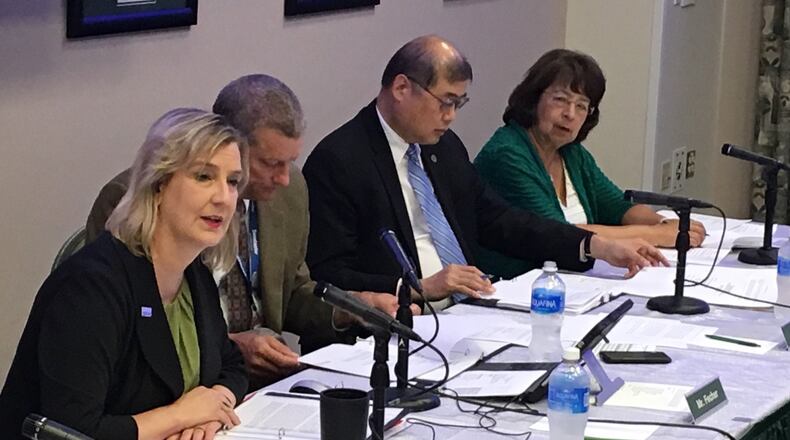The school’s board of trustees were told Tuesday the school has already started to fall behind on its goal of boosting reserves by another $6 million in fiscal year 2018. Just two years ago, Wright State maintained reserves close to $100 million.
EXCLUSIVE: WSU president talks plans for first school year on campus
Along with austerity measures, Wright State slashed $30.8 million in June from its fiscal year 2018 budget to begin correcting years of overspending.
“We made savings both on budgeted salaries, benefits and then on spending,” provost Tom Sudkamp said. “That really did make a significant payoff to end the fiscal year.”
The $10 million in added reserves was accomplished even as revenue from Wright State’s summer classes came in around $2 million less than last year, said Jeff Ulliman, vice president of business and finance.
WSU administrators have predicted since June that the school would almost certainly enter state fiscal watch within the next two years. The state measures the financial health of each public college and every institution that falls below a state threshold two years in a row is placed on fiscal watch.
Although Wright State is still expected to fall below that threshold this year, Ulliman said there’s a slight chance that the extra $10 million may keep Wright State from falling below it again next year and onto fiscal watch. In fiscal watch, the state will take over the financial control of the university.
RELATED: Wright State named one of ‘Best Midwestern’ colleges by review
The $10 million in unexpected savings came as Wright State’s board of trustees met for a special session on Tuesday. It marked president Cheryl Schrader’s first meeting and one in which she was presented with financial and legal issues that WSU faced long before she arrived in July.
“We cannot and will not overspend the FY 18 budget and we must work diligently together to be in the best possible financial position by year end,” Schrader said. “The trials of the past few years really is a stark wake-up call to the institution.”
The new way of financial management at Wright State should not be seen as a temporary detour of how things have been handled in the past, said board chairman Doug Fecher.
The budget cuts implemented in June were not a long term solution for Wright State but an “emergency tourniquet to slow the financial bleeding,” Fecher said. Both Fecher and Schrader have repeatedly called for more to be done to stabilize the university’s finances.
In fact, more needs to be done for Wright State to boost its reserves by the $6 million mandated by the board of trustees this year. The school is on track to fall about $2.3 million short of that goal.
The shortfall was caused by some of the university’s departments having “late information” that wasn’t factored into the budget approved by trustees in June.
RELATED: As president, Schrader wants to be Wright State’s ‘warrior’
In an attempt to correct that shortfall, Wright State’s strategic hiring committee will review every vacant position to see if its is a priority, Sudkamp said. The university could save around $11 million in attrition every year, Sudkamp said, so filling the $2.3 million gap should be relatively easy.
Wright State trustees on Tuesday also agreed to waive attorney-client privilege so the Ohio Auditor’s office can have access to an internal audit relation to an ongoing investigation into possible H-1B visa fraud. The state auditor’s probe marks the fourth agency that is looking into information stemming from the internal audit.
A spokesman for the state auditor declined to comment last week.
TOP HIGHER ED READS
» Wright State professor resigns while under investigation
» Miami University named third best party school in the country
» Higher education’s perception problem deepens along political lines
Continuing coverage
The Dayton Daily News is your best source for information on ongoing financial and legal issues at Wright State University as well as a new president starting. For updates, follow our higher education reporter on Twitter at @MaxFilby.
About the Author
